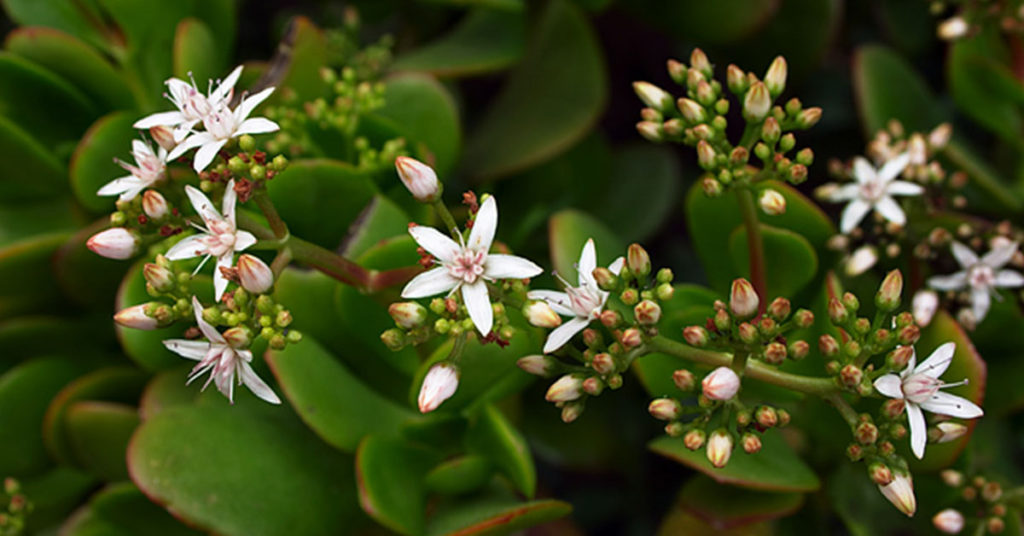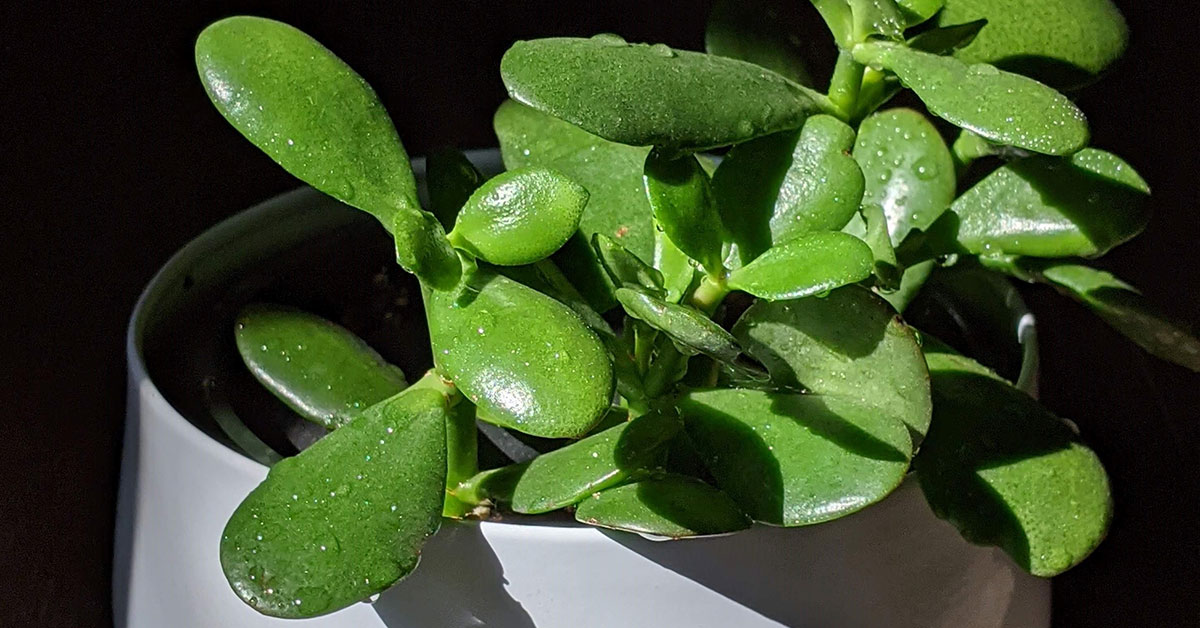Jade plants are one of those plants that are perfect for the lazy houseplant enthusiast. They can take an amazing amount of punishing neglect and keep on trucking. In a weird way, they seem to enjoy a little neglect, but only up to a point. Jade plants are also popular because of how easy it is to root new plants from cuttings. It’s not hard to learn how to propagate a jade plant and if you’re not careful, you might get addicted to the process. Pretty soon you’ll have dozens of them! What a good problem to have.
There are two ways to go about rooting jade plants: from stem cuttings and from leaves. Jade plants can also be grown from seeds. In this article, we’ll go over how to propagate jade plants from cuttings and leaves as well as saving, storing, and growing their seeds. Let’s dive in!
Read More: How To Propagate Succulents
How to propagate a jade plant from cutting
The first of the jade plant propagation methods in this article is propagating from cuttings. A jade plant cutting is a piece of stem taken from an existing jade plant. Select a branch of the plant approximately 3 inches long and free of any kind of disease or damage. Use a sterilized knife or shears to remove a branch from the plant. Proper sterilization is important to avoid transmitting disease to your plants.
Jade cuttings can be taken from new, green growth or older, woody growth. Either will work fine. You pretty much can’t go wrong.
Next, allow your jade cutting to dry. You don’t want to stick a freshly cut jade directly into the soil. I’ll usually allow 48 hours to pass before trying to plant the cutting. You can use a rooting hormone to help prevent disease and help the rooting process along, but this is not necessary. Most jade cuttings will grow without issue.
Jade does well in well-draining soil. Mixing potting soil with sand, perlite or vermiculite is ideal for jade plants. Once your cutting is dried and ready to go, plant the cutting in the soil and water. You don’t want the soil to be soaked but it should be somewhat damp. Once rooted, you can water more sparingly. Within a few weeks, you should see new leaf nodes beginning to develop and grow.
Read More: 10 Rare Houseplants You Never Knew Existed
How to propagate a jade plant from leaves
Propagating a jade plant from a leaf is about as simple as the above process of cutting propagation. I’ve actually had a healthy leaf get accidentally dislodged from a plant, land in the soil below it, and then sprout roots and begin to grow a new plant. It really is about as simple or complicated as you want to make it. With rooting from a leaf, you follow the above steps of letting it dry out, then plant the leaf in the sand/soil mix.
You don’t need to plant the leaf very deep. Usually I’ll just cover only the few centimeters from the stem of the leaf. When propagating a jade leaf, select a leaf that is free of disease and damage. The healthier the leaf, the better. Follow the same instructions for watering. Within a few weeks, roots should begin to develop and a new stem will begin to grow from the base of the leaf. Eventually that leaf will die and can be cut away from the stem of the plant.
Growing jade plants from seed

Jade plants are well known for their thick, succulent leaves that can vary in color and growth pattern. They aren’t well known for their flowers. Jade plants do flower though. Under the right conditions, they will erupt in mostly white flowers. Certain conditions need to be met in order to inspire your jade to flower.
In nature, jade plants flower in the winter when desert temperatures are cooler, the days are shorter, and rain is a little more plentiful. To mimic these conditions, keep your jade in a room approximately 60 degrees Fahrenheit and offer more water than usual. Proceeding with this process during winter is ideal because the lighting conditions will be right.
Once your jade plant has flowered, it should self pollinate. Not every variety of jade does this, however. Seeds can be collected once the flower has died. Allow the seeds to dry before planting. Seeds can be planted in the above potting soil mix approximately 1/4 inch deep in a 4 inch pot. Keep the top of the soil moist but don’t allow the soil to be sopping wet and soggy.
Keep Reading: 12 Pink Succulents You Need in Your Home This Summer













